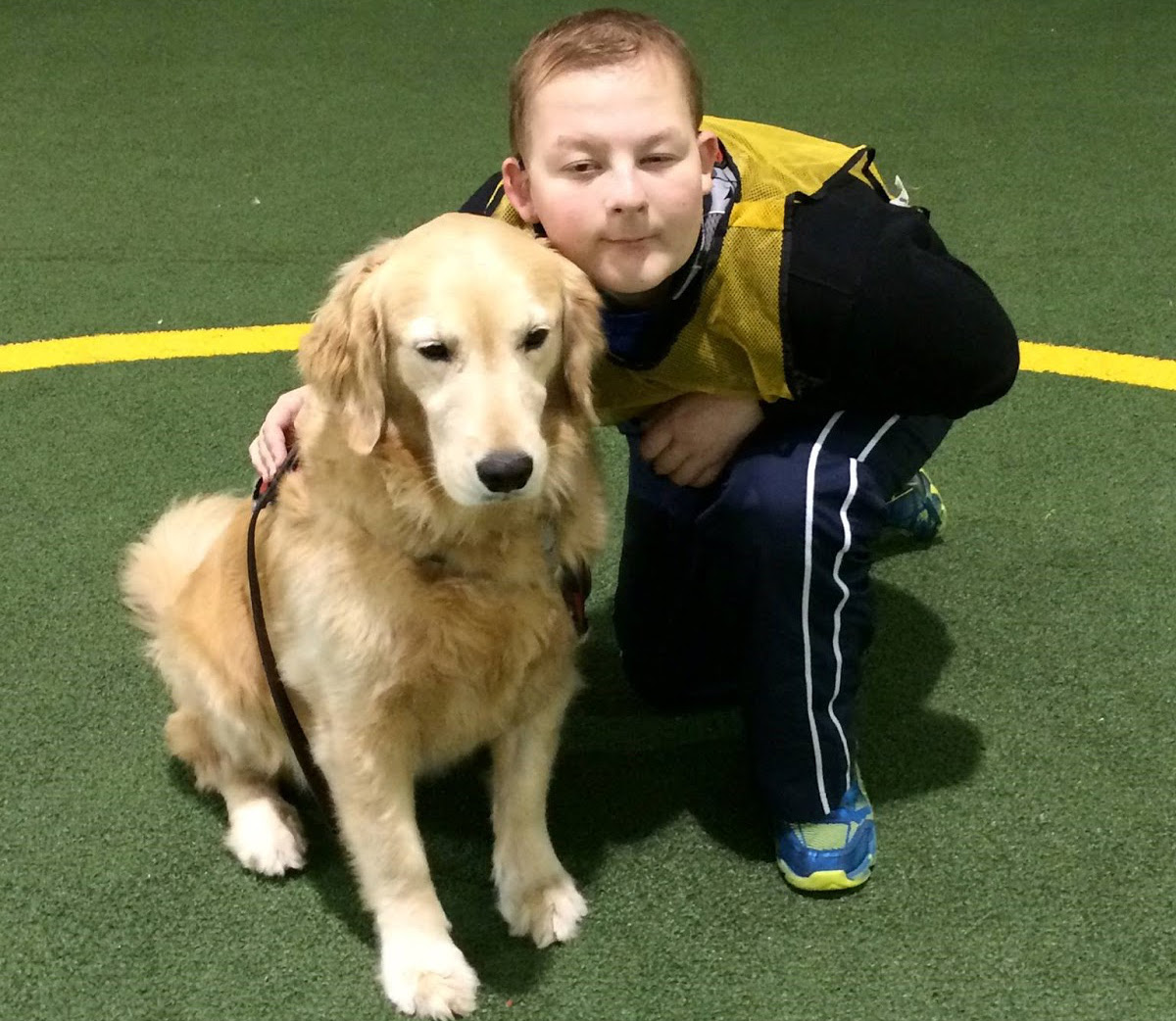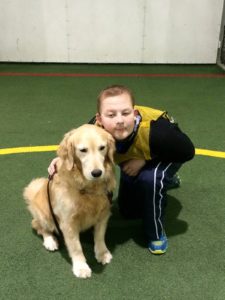There’s no doubt about it. Dogs bring inestimable joy and comfort to their human companions! Dogs trained as service animals for individuals with disabilities also bring joy and comfort. Yet, service dogs do so much more!
September is National Service Dog Month, a time to recognize the dogs that work so hard to help disabled individuals in our communities. If you’ve been considering adding a service dog to your family or are simply curious about why you see so many service dogs, emotional support animals and therapy dogs out and about, here’s the deal.
What makes a service dog different than a pet dog, therapy dog or emotional support dog?
According to the Americans with Disabilities Act, service dogs are “individually trained to do work or perform tasks for the benefit of an individual with a disability, including a physical, sensory, psychiatric, intellectual, or other mental disability.” Per the ADA, people with disabilities are permitted to take their service dogs just about everywhere they go including stores, restaurants, schools, on airplanes, etc.
What types of assistance can service dogs provide?
- Guide dogs (also known as seeing eye dogs) are trained to assist blind or visually impaired individuals to navigate the environment safely and independently by leading them around obstacles they may encounter in their daily travels.
- Hearing dogs alert deaf or hearing impaired individuals to sounds they may need to know about to function independently in their homes, offices or outdoor environments. The dogs do so by nudging their handlers and leading them to the sounds they hear. For example, guide dogs alert their handlers to sounds such as door bells, phones, sirens, alarms and crying babies.
- Medical Assistance Dogs are trained to avert medical crises by sensing when their handlers are at risk of suffering a medical event. For example, medical assistance dogs can detect changes in humans’ heart rate, blood pressure, glycemic index and can be trained to sniff out the presence of allergens that are dangerous to their handlers.
- Seizure Alert/Seizure Response Dogs alert handlers with epilepsy or other seizure disorders prior to or during a seizure. According to AI Media, “These dogs’ tasks can range from finding someone to help their owner, stimulating their owner to help them ‘wake up’ from a seizure, and physically moving their owner if they have a seizure in an unsafe place, such as the middle of the street.”
- Service Dogs for people with autism are trained to help children with autism stay calm during stressful situations; help with transitions; and may also provide opportunities for children with autism to practice their social and communication skills. “An Autism Support Dog can also keep a child from running away, and they can often track them if they do run off,” says AI Media.
- Service Dogs for Mobility assist people with physical disabilities including those who use wheelchairs, or have difficulty with balance and ambulating. They may also help handlers to open and close doors; help to prevent falls and more.
- Psychiatric Service dogs assist individuals with mental illnesses such as schizophrenia; obsessive compulsive disorder; and post-traumatic stress disorder.
What does training entail?
Though service dogs are not required to be trained by an outside organization or trainer, not every dog or dog owner is up to the task. According to the American Kennel Club, “Professional service dog trainers have high standards for their dogs, and the drop-out rates for service dog candidates can run as high as 50 to 70 percent.”
Dog training can take as long as 18 months to two years and training organizations may charge as much as $25,000 to train a service dog. Fortunately, there are organizations that provide financial aid or even full funding to cover the cost of a service dog.
What dogs are best suited for service?
Many breeds can be trained to be service dogs. The size of the service dog should correspond to the tasks the dog must do. Some of the most commonly trained service dogs are Labrador Retrievers, Golden Retrievers, German Shepherds, Standard Poodles and poodle mixes.
Where can I find out more about getting a service dog?
Visit the American Kennel Club’s website.





